- Home
- Brian Falkner
The Real Thing
The Real Thing Read online
Contents
Cover
Blurb
Logo
Foreword
The Taste Test
The Executives
Bojutsu
Amatil
The Turtle Dove
Head Office
Flea’s Party
Atlanta
Coca-Cola Plaza
The Secret Recipe
Hubble, Bubble, Toil and Trouble
733-23-A
Holiday Home for a Troll
Storm Rising
The Ugly Brothers
Anastasia Borkin
Shotguns and Rattlesnakes
The Tractor Green
Joke-a-Cola
The Heimlich Manoeuvre
Corker, Bonzer, Dinky Di
The Lost Recipe
Atrium
Loose Ends
On the Scent
The Airfield
The Island
The Spy Who Came in from the Coca-Cola Company
Collision at Sea
The Fax
The Turn of the Screw
Epilogue
About The Author
Copyright
Dedication
Other Books by Brian Falkner
STRANGE THINGS ARE HAPPENING TO THE KIDS AT GLENFIELD HIGH. THIS TIME IT’S FIZZER BOYD AND TUPAI WHITE’S TURN …
‘I’m sorry to interrupt your party,’ Harry said, ‘but a very tricky problem has developed at our head offices in Atlanta.’ He paused and looked at Fizzer. ‘Do you have a passport?’
Only three people in the entire world know the secret formula for Coca-Cola. So, when all three are kidnapped, the giant American corporation is in deep trouble. But the kidnappers didn’t count on the extraordinary abilities of Fizzer Boyd from Glenfield High. Soon Fizzer and his friend Tupai White are in the middle of a thrilling adventure, as a search for the missing recipe becomes a matter of life and death.
FOREWORD
Parts of this book are based on fact; other parts are pure fiction. The secret formula of Coca-Cola, for example, is indeed a secret and The Coca-Cola Company is steadfast in its silence over the recipe. The rule about only three people knowing the formula at any one time is a part of the Coca-Cola legend, as is the rule that the three cannot travel on the same aeroplane, although the legend differs in the number of people who know the recipe, depending on where you heard it.
The description of The Coca-Cola Company headquarters is for the most part accurate, as is its location in Coca-Cola Plaza, Atlanta. The mixing process, and the sweeteners used, are documented fact.
While the characters are all fictional, several of them have the names of real people. These were the winners of a number of competitions held in primary and intermediate schools around New Zealand. Congratulations to Hamish Knox, Kelly Fraser, Mohammad Sarrafzadeh, Keelan McCafferty, and Kate Fogarty, whose names all appear in this book.
The Coca-Cola Company does not endorse the contents of this book.
THE TASTE TEST
There’s something very special about a school fair. It’s the excitement of the weeks building up to it, and all the work that the kids do in the classroom, painting posters and making signs. It’s the colour and the bustle of the day itself, and how it always seems to be sunny, and the fact that on school fair day all the rules about what you’re allowed to eat, and not to eat, go straight out the window, and you’re allowed to stuff yourself with toffee apples, followed by candy floss, followed by hot dogs, followed by hot chips, followed by whatever else you want, followed by as much fizzy drink as you can drink!
Which brings us, in a roundabout kind of way, to Fizzer.
Fizzer Boyd was blessed with E.S.P. Not Extra-Sensory-Perception, like the amazing Kreskin, or Uri Geller, or any of those frauds on the TV who claim to have psychic powers. Fizzer couldn’t bend spoons, or move things with his mind, or read your thoughts, or tell the future (however, he did have good intuition, but we’ll get to that). What Fizzer had was Extraordinary Sensory Perception, although he insisted that it was nothing unusual and that he had just trained himself to be that way.
Where his friends would see a small dot in the sky, Fizzer could tell you what kind of bird it was. When they did the eyesight tests to see if you needed glasses, Fizzer would read the name of the printer off the fine print at the bottom of the eye chart. He could hear footsteps at the end of the corridor before anybody else, and he would know from the sound if it was their teacher returning so they should all stop talking and get on with their assignments. When the First Fifteen came back from an away game he’d know who they’d played by the smell of the mud on their boots. Touch a leaf to the back of his neck, and he could feel what kind of tree it came from.
Fizzer insisted that anyone could do this. That it was just a matter of patience and focus. That you had to narrow your perception down to just the single sense you were using, instead of relying on all five. He said that was why blind people often had extraordinary hearing, and deaf people could read lips flapping at high speed a hundred metres away.
Sight, sound, touch, smell, Fizzer was amazing at them all. But the sense he was most well-known for – that he became world-famous for – was his sense of taste.
And that’s also why Jason, Flea and Tupai were all perched around him on a stand at the Glenfield School Fair.
Fizzer’s real name was Fraser, but everybody called him Fizzer because he could do this clever trick with fizzy drinks.
Give him a sip of a fizzy drink, any fizzy drink, and he could tell you what it was. He could tell Coca-Cola from Pepsi (although everyone could do that). But Fizzer could tell Diet Coke from normal Coke, he could tell Coke-out-of-a-can from Coke-out-of-a-bottle. He could even tell the difference between Coke from a two-litre bottle and Coke from a 1.25 litre bottle, as long as it was fresh.
So Fizzer had his own stand at the school fair. There was a hundred-dollar prize for anyone who could produce a can or a bottle of soft drink that Fizzer couldn’t identify.
It had been Tupai’s idea and he was quite proud of it. They charged a dollar a go and, with the huge prize money, they had lots and lots of entries. It had been Jason’s idea to set up a soft-drink stand in the next alley because, he figured, they had to get their soft drink from somewhere …
They made money selling the soft drink, and they made money when Fizzer correctly identified the soft drink. It was quite a racket really, but it was all legal and, anyway, all the money raised went to the school swimming pool fund.
And it was all going rather nicely thank you until Jenny arrived. Tagging along after her was her boyfriend, Phil Domane.
Phil brought his own can of soft drink; a plain, standard Coca-Cola can that he’d purchased at the local dairy on his way to the fair.
There were certain rules to the game. Flea and Jason had to check each drink first to make sure it was a legitimate soft drink and that it hadn’t been tampered with. Tupai, the strongest kid in the school, stood around with his arms crossed, looking like a bouncer, in case there were any arguments.
They checked Phil’s can carefully and poured a little into a paper cup for Fizzer. (It had to be paper, he said, because he could taste the plastic ones.)
Phil put his money down and sat in the folding chair they had set up in front of the stand while Fizzer went through his little act. This was going to be easy, Tupai thought. Coca-Cola in a can. Fizzer would identify that in a second.
Fizzer waved his hand around the top of the paper cup, drawing the aroma of the drink into his nostrils. He swirled the drink, watching the liquid flow around inside the cup and the way the bubbles broke to the surface. He held the cup to his ear and listened to the tiny fizzing sound.
Mostly tha
t was just for show, part of his act. He could tell the drink in a couple of seconds simply by drinking it, but that didn’t look impressive enough for the punters, so he went through the whole rigmarole each time.
Phil waited patiently, Flea and Jason lined up the next contestant, and Tupai stood still and looked like a bouncer, while Fizzer eventually put the cup to his lips.
There was a pause, which was normal, but it went on for five or six seconds, which was not.
Flea and Jason both stopped what they were doing and turned to watch Fizzer. Still not worried though, surely he could tell Coca-Cola!
Phil waited some more. He didn’t look concerned. He was expecting to lose. He was helping support the stand.
Fizzer was still silent, and then Tupai started to get worried. Had something gone wrong? Was the cup not clean? Actually it was clean, fresh from the stack of new cups.
Finally Fizzer said, obviously uncertain for the very first time, ‘Corker Cola?’
Corker Cola was an Australian brand, just a cheap rip-off of the real thing: Coca-Cola.
Phil looked up in surprise.
‘No, no, it’s “Ice Cola”,’ Fizzer said quickly, but the expression on Phil’s face told him he was wrong.
Phil looked at Tupai, and a few moments later, more than a little stunned, Tupai handed him the hundred-dollar note that they had pinned to the top of the stand.
‘Congratulations, Phil,’ said Flea, who didn’t like Phil, but was big-hearted enough to be polite.
‘I … er … thanks?’ Phil stuttered.
Fizzer looked heart-broken, maybe from having been wrong, or maybe at losing the entire day’s profits from the stand.
‘What was it?’ he asked.
Jason silently showed him the can.
Fizzer shook his head. ‘No way. Not sweet enough. That was a little … well … not quite bitter, but Coke is definitely sweeter than that.’
Flea said, ‘We poured it ourselves.’
Fizzer snatched the can away from Flea, angry with himself, not his friends. He sniffed at the can and then drank some more, straight from the can.
‘This is not Coke,’ he said.
Jason insisted, ‘I opened the can myself, and it hadn’t been tampered with.’
Fizzer glared at Phil, who shrugged as if innocent of all charges and said, ‘Don’t ask me. I just bought it at the dairy.’
Fizzer looked back at the can, then back at Phil.
‘Which dairy?’ he asked.
‘The corner dairy.’
So they packed up the whole stand there and then, and the lot of them, except for Jenny and Phil, headed off for the corner dairy.
And they never did get to have any candyfloss, or toffee apples, or hot-dogs, or hot chips.
They drank all the fizzy drink left over though.
THE EXECUTIVES
At exactly that moment, in the cabin of a Lear Jet, thousands of miles away from their school, events were happening that would change all of their lives.
Actually, it may not have been at the exact same moment, what with international time zones and everything, but it sounds better that way.
Mr Bingham Elderoy Statham the Third – although he never used the ‘Third’ except on official stationery, because he thought it made him sound like a fraction – was quite comfortably seated in the soft leather lounge chair in the pleasantly appointed cabin of the jet.
It was a company jet. The company that he worked for – and had a substantial share-holding in – was one of the largest companies in the world, so it could afford a company jet, or two, or three. In fact it had a small fleet. The company that Bingham (Bing to his friends) Statham worked for had branches in almost every country of the world. It only sold a few products, but its flagship product was as American as Mickey Mouse or the Statue of Liberty.
Bingham Statham worked for The Coca-Cola Company, and he was quite worried that afternoon (it was afternoon where he was in the world, which happened to be Los Angeles) about two separate things. The first thing was that his ferret had died. He had two pet ferrets, named Olivia and Candy, after his first two wives (which annoyed Margie, his third wife, to distraction). Only now Candy had died, of unknown causes, and he was worried about Olivia. Worried that she might contract the same illness, and worried that she would be pining for her friend. Ferrets are very social creatures, and he felt she would miss Candy terribly.
The second reason he was worried was that the jet seemed to be flying in the wrong direction. Candy – the second wife, not the ferret – always said he had a good sense of direction. But that sense of direction said he was going the wrong way.
He was supposed to be flying to New Jersey for an important meeting with Maxim Portugale of Stepan Co., the people who imported the specially treated coca leaves that were used to produce the secret Coca-Cola formula.
Ralph Alderney Winkler (the First) was flying to the same meeting.
Both he and Bingham were flying from LA, where they had been at a conference of Important American Business Leaders (IABL), at roughly the same time, and there were three spare lounge chairs, plus a small soft sofa, on the Lear Jet. Yet Ralph Alderney Winkler was not flying with Bingham. He was on a commercial flight. First class of course, but still a step down for Mr Winkler, who was accustomed to only the utmost luxury at all times. A bit like Olivia (the wife not the ferret).
The reason was that Bingham and Ralph were two of only three people in the world who knew the secret formula to the world’s most popular soft drink: Coca-Cola. There was a scientist living in Okinawa off the coast of Japan who claimed he’d worked it out, but The Coca-Cola Company denied this, and the scientist had no way of proving his formula was correct.
The Coca-Cola Company has its own laws, commandments you could call them, and one of them is this: the three people who know the recipe at any one time are never allowed to travel together, whether it is by limousine, boat, helicopter, fast camel or Lear Jet. The reason is obvious. If some terrible accident occurred and all three were lost, then the secret formula of Coca-Cola, and countless millions of dollars of company profits, would be lost with them.
There was another Lear Jet that was supposed to have taken Ralph Winkler, but a fault had developed with one of its engines, so it had to go for a maintenance check and was unavailable for the flight.
Which was why Ralph Alderney Winkler was sitting in a first class seat, on a Boeing 727, probably no more than a few kilometres from Bingham Statham in his soft leather lounge chair in the cabin of the Lear.
The third person with knowledge of the recipe was Ms Clara Fogsworth, an elderly spinsterish lady with gold-rimmed glasses and a heart to match, who was currently fly-fishing in the Bahamas.
Spinsterish she may have been, but a spinster she was not. She had buried one husband and still led a very active and exciting life despite her advancing years.
But back to Bingham, Bing, we should call him because we know him so well by now that we are almost friends.
He alternated worrying about Olivia, the surviving ferret, with worrying about why the plane was heading sou’west, instead of sou’east.
The pilot had been in to see him before take-off, as was considered polite, and he seemed a nice enough young man. Not one of the pilots that Bing recognised, but then there were a lot of them, and they changed quite regularly, so he didn’t know all of them by sight, not by any means.
After a while, though, the worry about the plane started to take over from the worry about the ferret, and he unbuckled his seat belt and wandered carefully forward to the closed cockpit door. It was locked, which was a little unusual, so he knocked.
There was no answer, so he rapped a little louder. Still no response. So he called out, ‘Hello. Excuse me, pilot.’
Still nothing. As he made his way back to his seat, the thought slowly crossed his mind that maybe he had been kidnapped.
Ms Clara Fogsworth knew she had been kidnapped. There was no doubt in her mind. Either tha
t or she was on her way to a very unusual surprise birthday party. However, it wasn’t her birthday, and, even if it was, she doubted she would have been roughed up to the degree that she had been by the two thugs who had greeted her as she walked off the boat.
‘Roughed up’ is a relative term, which means different things to different people.
To Clara Fogsworth, the stern hand on her upper arm that had steered her firmly, but courteously, towards a waiting black van, had been the roughest treatment she had experienced in her life. Unforgivable, she thought. How could they?
How could he?!! she thought, with a double exclamation mark.
He being Mr Joseph Sturdee, a handsome, athletic man she had been dating for about three months. He was young too, only fifty-five, with the most devilish grin which made her go quite weak at the knees. Of his involvement in the kidnapping she had no doubt: he had led her straight into the hands, the rough hands, of the thugs.
That raised the horrible possibility of the whole three-month long romance being nothing but a set up. Ms Clara Fogsworth didn’t like to think about that too much though, because the whole affair had been quite a boost to her ego. He was, after all, a tall, handsome and younger man.
But, nevertheless, here she was, with her hands now tied in front of her with one of those dreadful, cheap plastic ties they use to tie up plants, sitting in the back of a black van with no windows, speeding to some unknown place somewhere in the Bahamas.
Rough treatment indeed!
In New Jersey, not all that much later, Ralph Winkler eased himself into the back of a long, black limousine. Not as comfortable as usual he thought, looking with disdain at the plain cloth upholstery. After having to endure first class service on the flight from LA, he really felt he should at least have had suede or leather seating in the limousine.
‘You’re from Stepan Co.?’ he asked the large man who squeezed in beside him, intending to complain.
The man nodded, but he can’t have been, or he wouldn’t have pulled that canvas bag down over Ralph Alderney Winkler’s head.

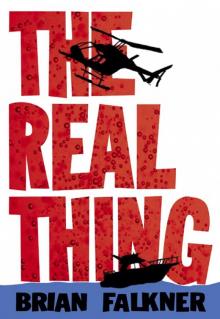 The Real Thing
The Real Thing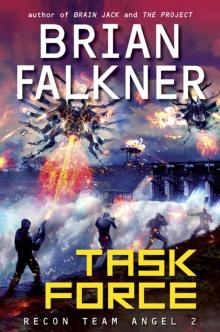 Task Force
Task Force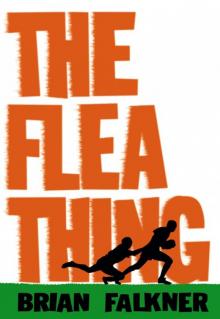 The Flea Thing
The Flea Thing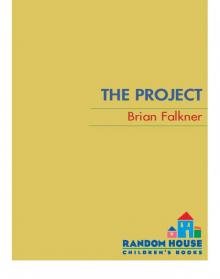 The Project
The Project Clash of Empires
Clash of Empires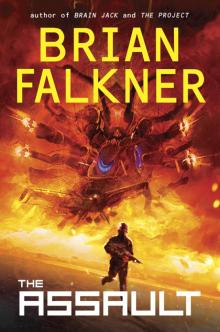 The Assault
The Assault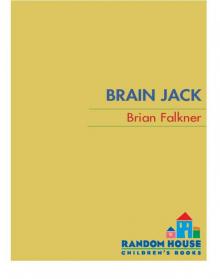 Brain Jack
Brain Jack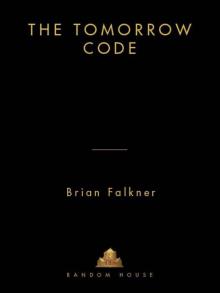 The Tomorrow Code
The Tomorrow Code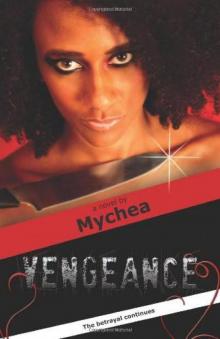 Vengeance
Vengeance The Super Freak
The Super Freak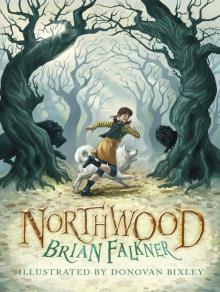 Northwood
Northwood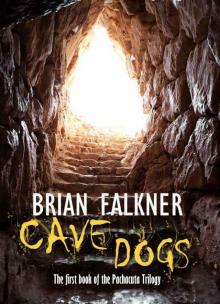 Cave Dogs (Pachacuta Book 1)
Cave Dogs (Pachacuta Book 1) Maddy West and the Tongue Taker
Maddy West and the Tongue Taker